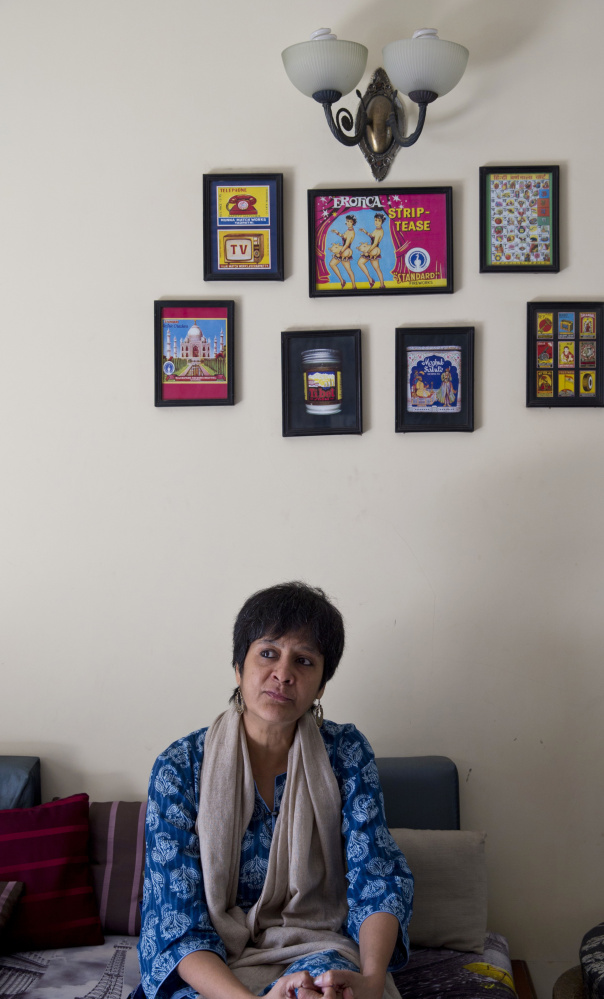MUMBAI, India — When Bilqis talks about having circumcised her daughter, she goes back and forth on how she feels – sometimes within the same sentence.
The 50-year-old doctor defends what is widely known as female genital mutilation within her small, prosperous Shia Muslim sect in India, saying it’s a mild version that amounts to “just a little nick. No harm done.” Yet she also acknowledges regret and guilt at putting her daughter through a practice that the United Nations calls a violation of girls’ rights.
“It’s really nothing, it changes nothing,” repeats Bilqis, who asks to be anonymous except for her religious name because of the personal nature of the subject. But she adds: “I have no doubt in my mind that it is not helpful. … If I had a young daughter now there’s no way I would have her circumcised.”
CUSTOM DIFFICULT TO ERADICATE
The struggle within Bilqis and her Dawoodi Bohra community reflects a growing debate over the best way to address a custom that is proving stubbornly hard to eradicate. At least 200 million girls and women alive today have undergone some form of female genital cutting, according to the U.N. – 70 million more than in 2014 because of increases in both population and reporting. And the U.N. predicts the number of victims will increase significantly over the next 15 years because of population growth.
Faced with this prospect, experts in the respected international Journal of Medical Ethics in February proposed permitting small female genital cuts that “uphold cultural and religious traditions without sacrificing the health and well-being of girls and young women.” But this approach is already carried out in the Bohra community and is proving highly controversial.
“They always say it’s just a nick and a touch, but there are incidents where things have gone horribly wrong,” said Masooma Ranalvi, who broke the silence around female genital mutilation in her community last year with a series of online petitions that sought to ban it.
Ranalvi remembers when she was 7, her grandmother promised her candy and ice cream. Instead, she was taken to a dingy room in a back alley. Her dress was pulled up and her legs and arms held down. A sharp pain followed. She came home in tears.
The Dawoodi Bohras are an affluent trading community of about a million people concentrated mostly in Mumbai, but also seen across the U.S. and Europe. The Bohras community is also tightly controlled by an entirely male clergy. From Mumbai to New York, medical professionals perform circumcision for girls, or khatna, with the blessings of the religious head known as the Syedna. The procedure goes back to the community’s roots in Yemen.
Circumcision has become a battleground for the two Bohra men vying for succession, the half-brother and the son of the former Syedna. The half-brother says it is time to end the practice. The son says the tradition must continue and notes that Bohra men are circumcised. Activists protest that the two cannot be compared because male circumcision has some health benefits. Alefiya, a 34-year-old social worker in the U.S., remembers the khatna being done by her grandmother’s sister in a cold basement in New York. It was awkward and painful, she said.
Alefiya, who asked for her full name not to be used for privacy, objects as much to the message sent as to the act itself. Older Dawoodi women call the clitoris “haraam ki boti,” or sinful flesh – the flesh that can lead a woman astray.
“It’s horrible, it’s disgusting, that these completely natural experiences are made to feel dirty,” she said. “The guilt of sexuality is always on our heads.”
DAUGHTER IN U.S. GROWS ANGRY
Bilqis was circumcised as a child but has only the faintest memory of it. It was neither harmful nor traumatic for her, she said. As a doctor, however, she remembers a child coming to her after being cut too deeply, requiring blood vessels to be cauterized.
Fifteen years ago, she circumcised her daughter out of a sense of religious obligation. When it was done, she remembers thinking, “One social milestone passed. One responsibility dealt with.”
Sameena, now 22, is a graduate student at an Ivy League school in America. She is gradually coming to terms with her clear memory of being circumcised at age 7. It didn’t hurt, but the memory makes her uncomfortable, although she can’t say exactly why.
The next time it came up was when she was 15 or 16, with other Dawoodi Bohra girls at school. When she asked, her mother told her it was something done in their community.
Spurred in part by the increasing discussion around khatna in her community, Sameena began researching it. First there was denial, and then fury. She says many Bohras are misled to believe that Islam condones the procedure.
She has confronted her mother, but her anger is really at the community. She wants the Bohra religious leadership to come out against the practice.
“It’s not going to end by not talking about it. You have to keep bringing it up as something that should not be done,” she said. “That’s the only way to tackle it.”
Send questions/comments to the editors.



Success. Please wait for the page to reload. If the page does not reload within 5 seconds, please refresh the page.
Enter your email and password to access comments.
Hi, to comment on stories you must . This profile is in addition to your subscription and website login.
Already have a commenting profile? .
Invalid username/password.
Please check your email to confirm and complete your registration.
Only subscribers are eligible to post comments. Please subscribe or login first for digital access. Here’s why.
Use the form below to reset your password. When you've submitted your account email, we will send an email with a reset code.